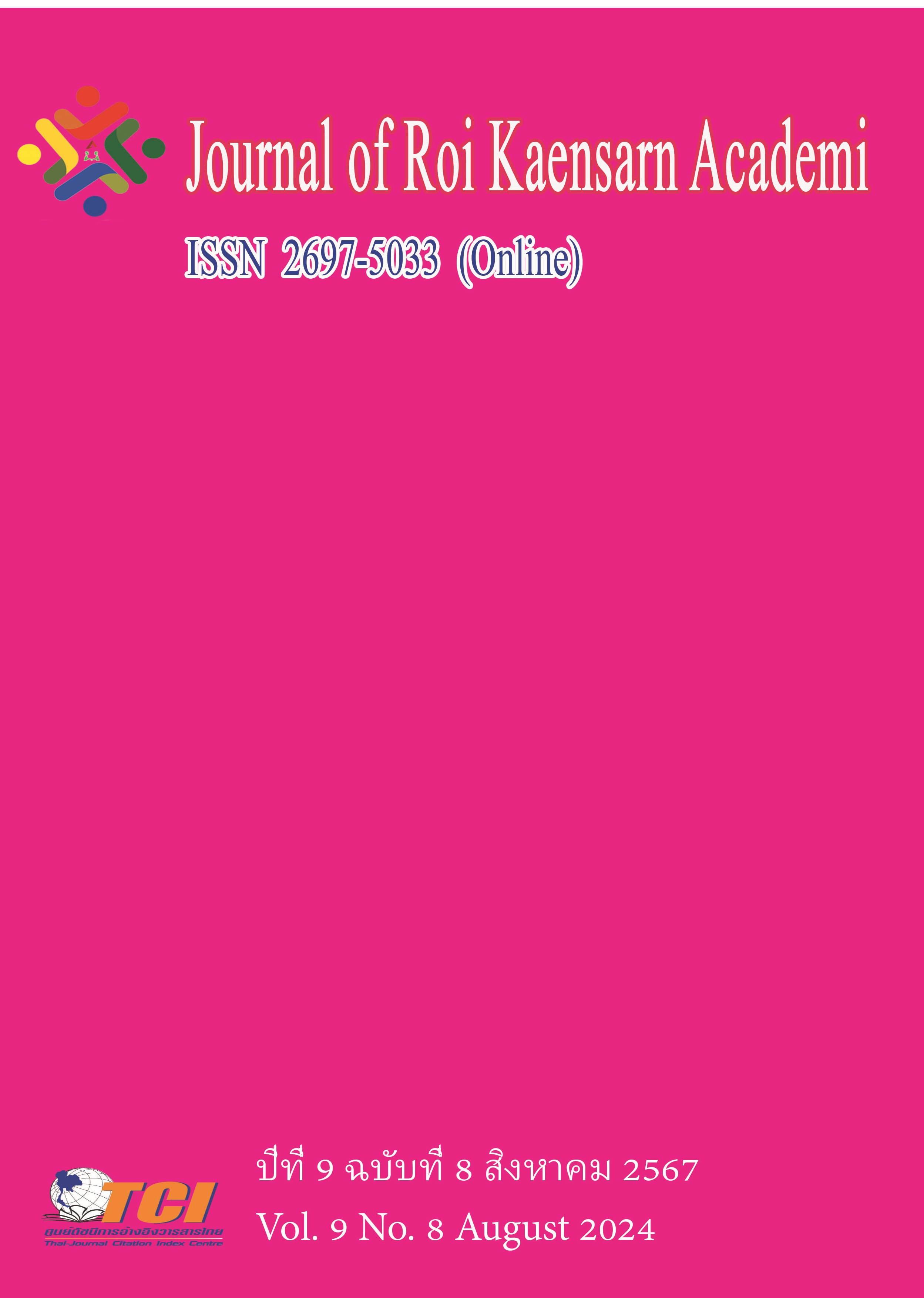The Change Management on Food Safety Management of Food Production Enterprises in Shandong Province of China
Main Article Content
บทคัดย่อ
The objective of this research were to study 1) change management (food safety culture, organization structure change, technological), food safety risk control and government support effect on food safety management performance; 2) To analysis change management (food safety culture, organization structure change, technological), food safety risk control and government support effect on food safety management performance; and 3) To develop food safety management performance model. The research instrument is a mixed method, collected data from a sample of 600 sample of enterprises reaching above medium-sized scale is distributed in 16 cities in Shandong Province. The statistics for data analysis were frequency, percentage, mean, standard deviation, and structural equation model path analysis.
The results of this research found that: 1) It is found that every factor has a mean at the high level. The analyzed model is an industrial enterprise above the scale are those with product sales revenue of RMB 20 million or more (inclusive) in that year. 2) the number of enterprises reaching above medium-sized scale is distributed in 16 cities in Shandong Province having the Goodness of-Fit Index of = 2.872, RMSEA = 0.058, RMR = 0.024, p-value 0.000; and 3) The influence lines of all factors affect to Change Management on Food Safety Management of Food Production Enterprises in Shandong Province, China. Which is the highlight for change management has a significant impact on the performance of food safety management of the industrial enterprises and the number of enterprises in 16 cities in Shandong Province.
Article Details
เอกสารอ้างอิง
Bintsis, T. (2017). Foodborne pathogens. National Institutes of Health. AIMS Microbiol. 3 (3), 529–563.
Bohman, V., & Pårup, H. (2022). Purchasing with the Party: Chinese consumer boycotts of foreign companies, 2008–2021. China: Swedish National China Centre.
Burki, U., Ersoy, P., & Dahlstrom, R. (2018). Achieving triple bottom line performance in manufacturer-customer supply chains: Evidence from an emerging economy. Journal of Cleaner Production. 197(Special), 1307-1316.
ECA. (2023). FDA Warning Letter for South Korean Manufacturer: Identity Testing, QU Oversight, Equipment Qualification and Maintenance. Online. Retrieved March 1, 2023. Source https://www.gmp-compliance.org/gmp-news/
FAO. (2023). The State of Food Security and Nutrition in the World. Online. Retrieved March 1, 2023. Source https://www.fao.org/3/cc0639en/cc0639en.pdf
FAO. (2023a). The Future of Food Safety. Online. Retrieved March 12, 2023. Source https://www.fao.org/3/CA3247EN/ca3247en.pdf.
Iakovou, E., Bochtis, D., Vlachos, D., & Aidonis, D. (2015). Supply Chain Management for Sustainable Food Networks. United Kingdom: John Wiley & Sons. Ltd.
IFCIO. (2023). IFCO is our trusted food safety partner. Retrieved March 12, 2023. Online. Source https://www.ifco.com/our-expertise/food-safety/?creative=69281832 9829&keyword=food%.
Ishaq, M., Li. C., & Ping, Q. (2014). Food Safety Issues in China: An Insight into the Dairy Sector. Journal of Animal and Veterinary Advances. 13 (12), 719-727.
Li, C., Zhu, H., Li, C., & Qian, H. (2021). The present situation of pesticide residues in China and their removal and transformation during food processing. Food Chemistry. 354 (2), 129552.
Liu, X., Liu, G., Wu, Y., Pang, X., Wu, Y., Qinshu., Niu, J., Chen., O., & Zhang, X. (2021). Transposon sequencing: A powerful tool for the functional genomic study of food-borne pathogens Trends in Food. Science & Technology. 118 (7), 679–687.
Lu, D., Liu, J., Liu, H., Guo, Y., Dai, Y., Liang, J., Chen, L., Xu, L., Fu, P., & Li, N. (2023). Vital Surveillances: Epidemiological Features of Foodborne Disease Outbreaks in Catering Service Facilities - China, 2010–2020. China CDC Weekly. 5 (22), 479-484.
Merieuxnutri sciences. (2023). North American Food Recalls Headed by Allergens. Online. Retrieved March 12, 2023. Source https://www.merieuxnutrisciences.com/na/north-american-food-recalls-headed-by-allergens/.
Sohu. (2020). Food Safety Promotion Week: Foodborne diseases remain the biggest food safety issue in China. Online. Retrieved March 12, 2023. Source https://www.sohu.com/a/ 419787749_120207477.
Wageningen University. (2023). Food security: sufficient safe and healthy food for everyone. Online. Retrieved March 1, 2023. Source https://www.wur.nl/en/show/food-security-11.htm.
Wang, X., Xu, Y., Liang, M., Gao, J., Wang, J., Chen, S., & Cheng, J. (2022). Chinese Consumers’ Trust in Food Safety Surveillance Sampling of Commonly Consumed Foods. National Institutes of Health. 11 (13), 1971.
WHO. (2022). Food Safety. Online. Retrieved March 12, 2023. Source https://www.sohu. com/a/419787749_120207477.https://www.who.int/news-room/fact-sheets/detail/food-safety.
Yang, R., Huang, W., Zhang, L., & Thomas, M. (2009). Milk adulteration with melamine in China: crisis and response. Quality Assurance and Safety of Crops & Foods. 1 (2), 111-116.

